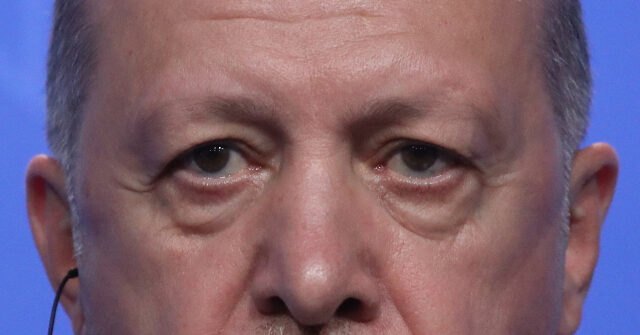In the aftermath of the Syrian Civil War, President-elect Donald Trump has presented a controversial perspective on the conflict, particularly focusing on the recent fall of Bashar Assad’s regime. Describing Assad as a “butcher” whose departure would go unnoticed by his people, Trump posited that Turkish President Recep Tayyip Erdogan emerges as the prime beneficiary of this turmoil. Following a significant offensive led by Hayat Tahrir al-Sham (HTS), an al-Qaeda affiliate, Assad fled to Russia, leaving the extremist group in control of Damascus. Trump’s remarks come amid the Biden administration’s commitment to recognizing a future Syrian government that emerges from an inclusive transition, emphasizing a shift in U.S. foreign policy toward potentially endorsing a regime influenced by Islamist factions.
Reports suggest that HTS and Erdogan had been in contact months before capturing Aleppo and rapidly advancing on key regions, culminating in the relatively bloodless takeover of the capital. Erdogan, who had previously vowed to overthrow Assad, has openly supported the Syrian opposition while simultaneously nurturing ties with other jihadist entities, specifically the Syrian National Army (SNA). This organization, a Turkish proxy formed from remnants of the Free Syrian Army, has aggressively targeted the Kurdish population in northern Syria, highlighting Turkey’s complex and seemingly contradictory alliances within the region. The backdrop of ongoing military action complicates the already tumultuous Syrian landscape, with Turkey’s perceived aspirations to exert control over parts of Syria dating back centuries.
The Syrian Civil War, which erupted in 2011 in response to Assad’s brutal crackdown on dissent, has frequently seen Turkey intervening, specifically against Kurdish forces that Turkey equates with the Kurdistan Workers’ Party (PKK), a group designated as a terrorist organization by the U.S. While the U.S. allied with the Syrian Democratic Forces (SDF), predominantly composed of Kurds, in the fight against ISIS, Turkey’s military campaigns against the YPG have posed a challenge for U.S. foreign relations, trapping American interests between supporting Kurdish forces and maintaining a strategic alliance with Turkey.
During a recent press conference at his Mar-a-Lago estate, Trump elaborated on his views, lauding Erdogan as a “smart guy” and insinuating that Turkey had orchestrated a substantial shift in Syria’s power dynamics with minimal bloodshed. Trump expressed skepticism about the future of U.S. military presence in Syria—specifically the deployment of American troops under President Biden—calling into question their safety in a region with overwhelming Turkish military strength. His comments reflected a broader narrative that prioritizes American withdrawal from overseas conflicts, encapsulating his administration’s approach to foreign military engagements.
Trump’s reflection on Assad’s atrocities, alongside his previous military actions against the Syrian regime, underscores a consistent thread in his approach to American involvement in foreign conflicts. He invoked the legacy of former President Obama’s unfulfilled promise to act against Assad’s chemical attacks as a pivotal moment for intervention, directly contrasting his proactive decisions during his term. This portrayal suggests a complex interplay of past leadership decisions shaping current geopolitical realities in Syria, as Trump positions himself as both a critic of previous administrations and a pragmatic observer of ongoing conflict.
With a growing divide among various factions in Syria, particularly between Kurdish forces and HTS, SDF commander Mazloum Abdi suggested that negotiations with HTS could help stabilize some areas amidst escalating violence from Turkish forces. The ongoing battle for influence in Syria reflects broader geopolitical tensions, with Kurdish leaders still expressing gratitude for past U.S. assistance while recognizing the shifting support dynamics in the region. Trump’s approach to Turkish-Kurdish relations demonstrates the U.S.’s precarious balancing act between allies with conflicting priorities, foreshadowing ongoing instability as regional powers jockey for dominance in a fractured landscape.

